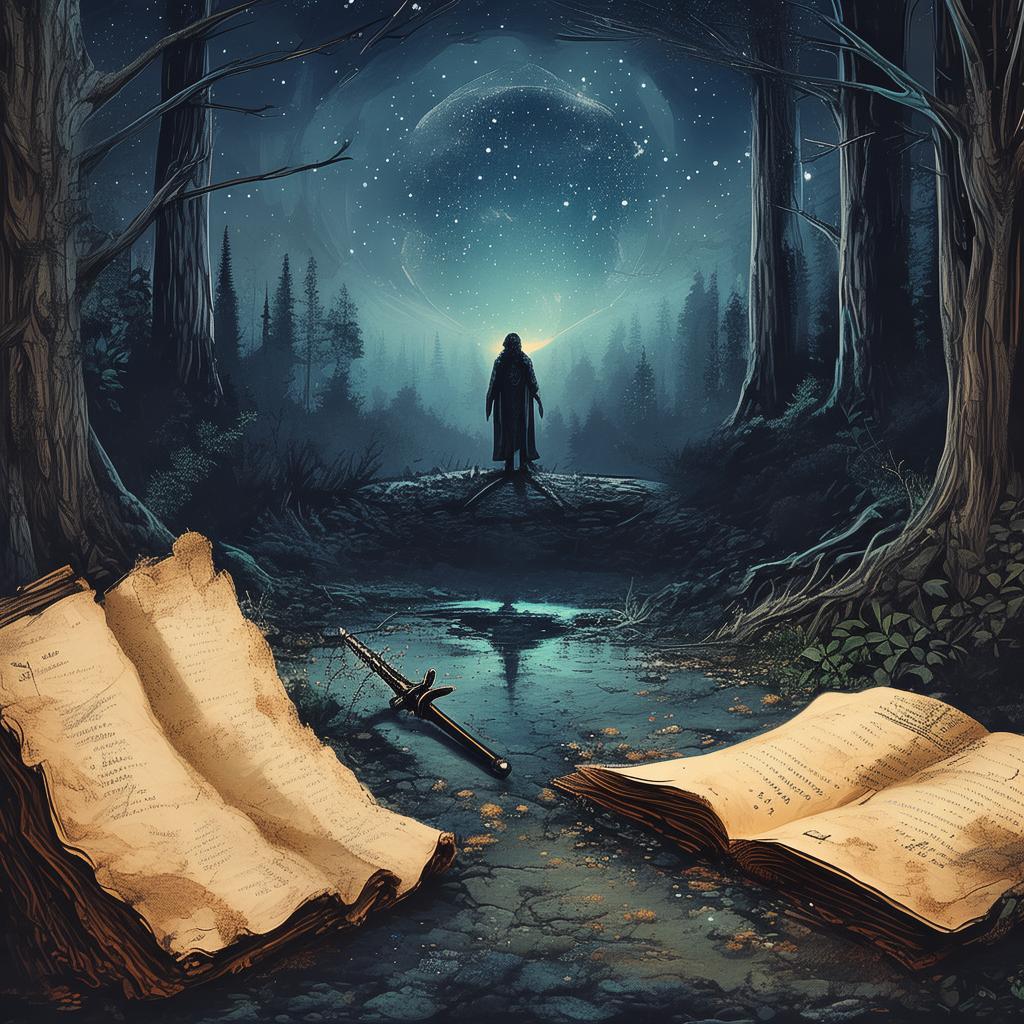The Papillon's Paradox: Identity Unraveled
In the quaint town of Lumina, nestled between the whispering woods and the murmuring rivers, there lived a young philosopher named Elara. Her life was a tapestry woven with threads of quiet contemplation and the pursuit of profound truths. One crisp autumn morning, while wandering the town's gardens, she stumbled upon a peculiar sight—a papillon butterfly perched on a flower, its wings shimmering with an ethereal light.
Curiosity piqued, Elara knelt closer, and as she watched, the butterfly's wings fluttered open, revealing a complex reflection. In the shimmering surface of the wing, Elara saw not only the butterfly but also an image of herself, standing there, watching. The image was a perfect duplicate, yet it seemed to pulse with a life of its own, as if it were a separate entity.
Elara's mind raced with questions. How could a butterfly reflect an image of a human? Was this a trick of light and shadow, or was it something more profound? The butterfly's image began to change, morphing into a figure that bore an uncanny resemblance to her, yet it was not her. It was a version of herself with a different past, a different future, and a different set of experiences.
Intrigued, Elara reached out to touch the butterfly's wing, and in that moment, the reflection seemed to come alive. The image of Elara spoke, her voice resonating in Elara's mind. "I am you, Elara, but not as you know yourself. I am the reflection of your true identity, the one you have yet to discover."

The butterfly's image began to tell a story. It spoke of choices made, paths not taken, and the weight of the world upon its shoulders. Elara was mesmerized, drawn into a world where the boundaries between reality and reflection blurred.
As the butterfly's tale unfolded, Elara realized that the reflection was not just a mirror image but a representation of her innermost self. It was the sum of her thoughts, feelings, and actions, condensed into a form that could speak and share its experiences.
The butterfly's reflection spoke of a moral dilemma: to live a life of conformity or to embrace the unknown. It spoke of the fear of change and the comfort of the familiar. Elara was confronted with her own fears and desires, her own struggles and triumphs.
The butterfly's image continued to evolve, each transformation revealing a different aspect of Elara's identity. There was the Elara of the past, who had chosen a path of solitude and introspection. There was the Elara of the present, who was torn between her duty to her family and her longing for personal freedom. And there was the Elara of the future, who was brave and unafraid, ready to face whatever life had in store.
As the butterfly's reflection grew more vivid, Elara felt a sense of liberation. She saw herself as more than just one person, but as a collection of experiences and possibilities. She realized that her identity was not fixed, but fluid, shaped by her choices and the world around her.
The butterfly's image spoke of the paradox of identity. It was both a reflection of the self and a separate entity, a duality that fascinated and confounded Elara. She pondered the nature of reality and the essence of self, questioning whether her true identity was the one she saw in the mirror or the one that lived within the butterfly's wings.
In the days that followed, Elara's life changed. She began to see the world in a new light, understanding that her identity was not something to be defined by others, but to be explored and embraced. She saw the beauty in the paradox, the complexity in the simplicity, and the potential in the unknown.
The butterfly's reflection remained with her, a constant reminder of the duality of her existence. It became her guide, her companion, and her confidant. She carried the butterfly's message with her, a reminder to always question, to always seek the truth, and to always embrace the paradox that is her identity.
Elara's journey was not without its challenges. She faced the judgment of others, the skepticism of her peers, and the fear of the unknown. Yet, she pressed on, driven by the butterfly's reflection, which taught her that identity is not a destination but a journey, one that is never-ending and always evolving.
In the end, Elara found peace in the paradox. She realized that her identity was not a fixed point, but a dynamic force, constantly shifting and changing with each new experience. She learned to embrace the complexity of her being, to celebrate the duality of her nature, and to live with the understanding that she was both the butterfly and the reflection, the self and the other, the real and the imagined.
And so, Elara continued her journey, her heart light and her spirit free, guided by the Papillon's Paradox, which taught her that the true essence of identity lies not in the mirror, but in the reflection of one's own soul.
✨ Original Statement ✨
All articles published on this website (including but not limited to text, images, videos, and other content) are original or authorized for reposting and are protected by relevant laws. Without the explicit written permission of this website, no individual or organization may copy, modify, repost, or use the content for commercial purposes.
If you need to quote or cooperate, please contact this site for authorization. We reserve the right to pursue legal responsibility for any unauthorized use.
Hereby declared.









